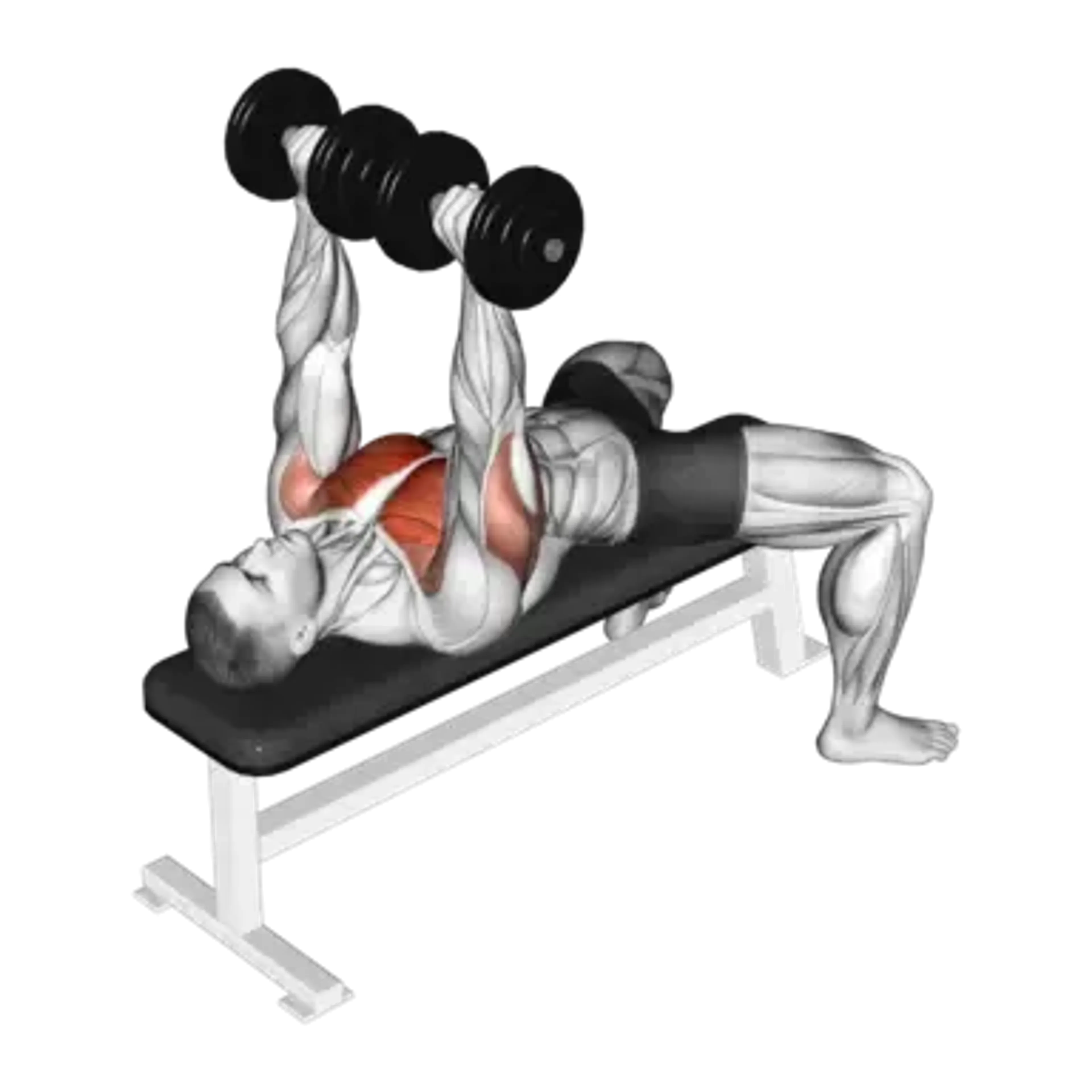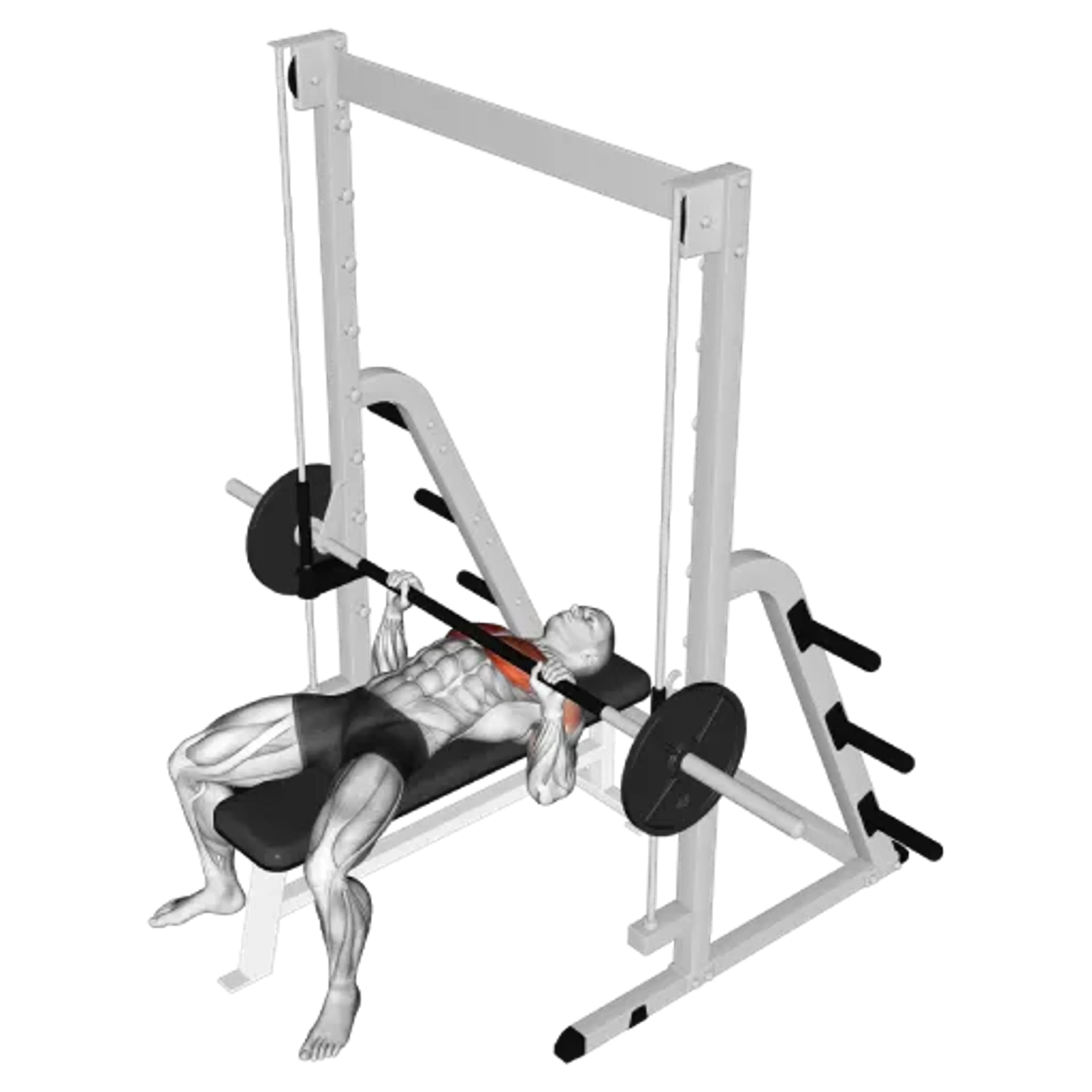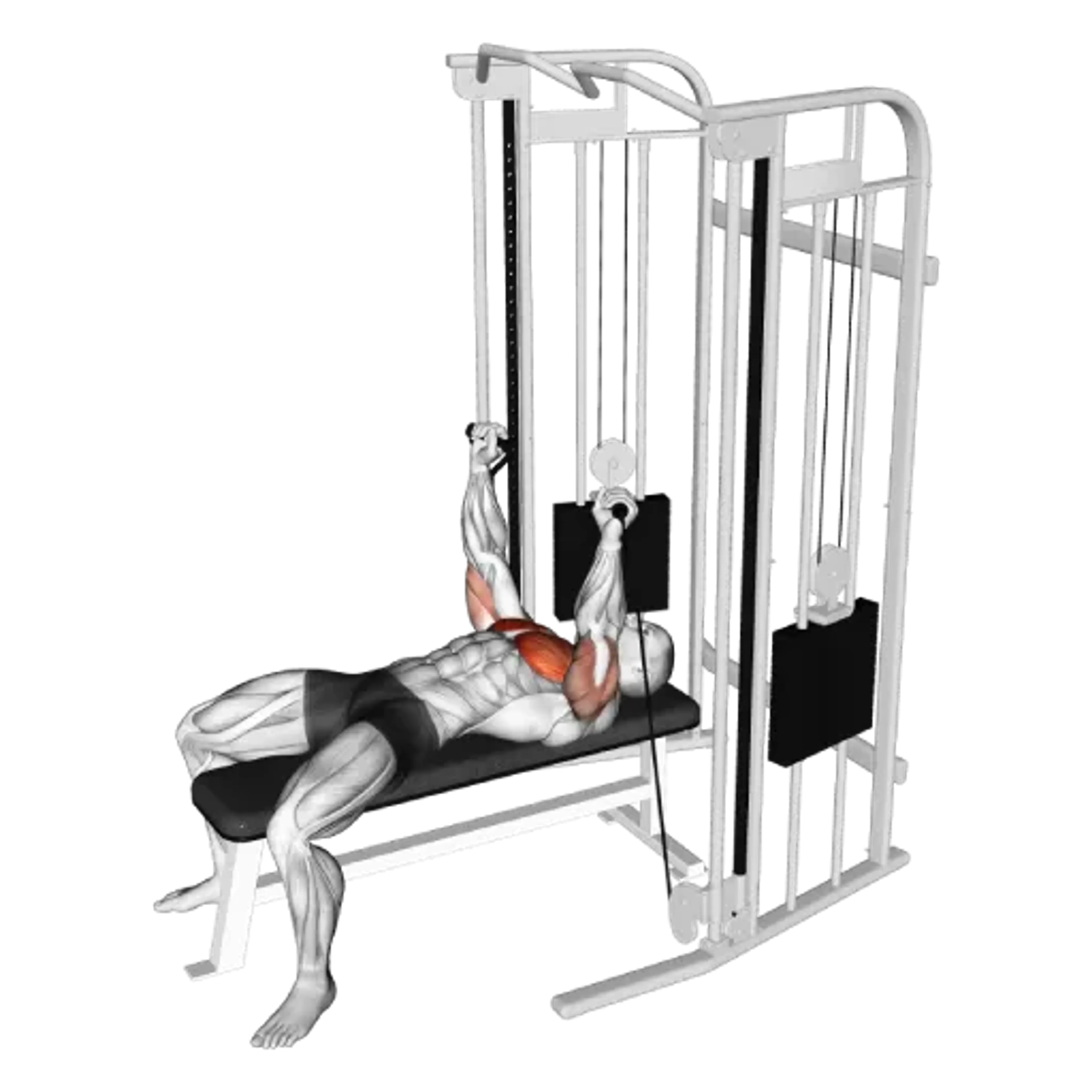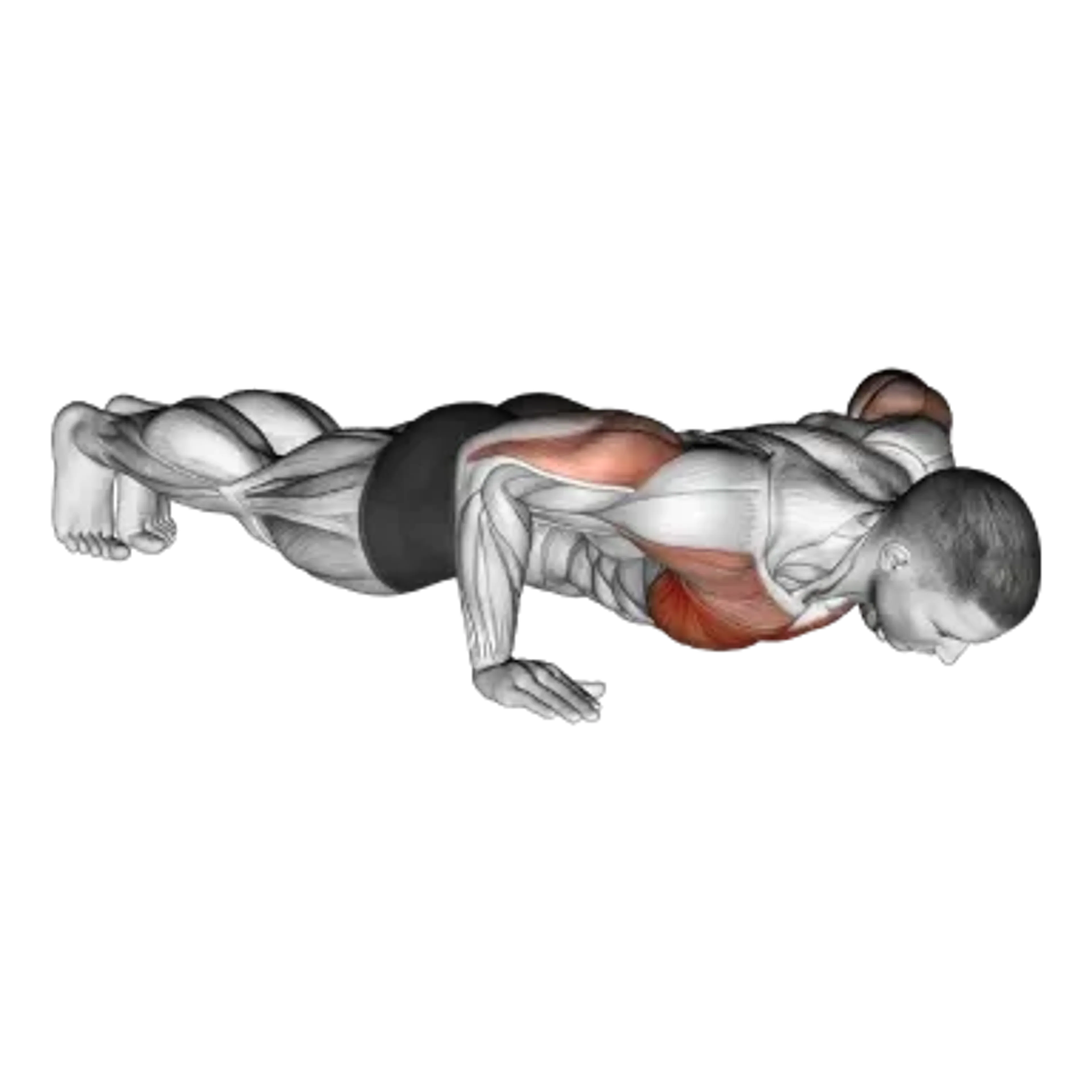Barbell Bench Press (Reverse Grip)

Overview
- Primary Focus:
- Chest.
- Equipment:
- Barbell and bench.
- Difficulty:
- Advanced.
General Information
Barbell Bench Press (Reverse Grip) is a compound exercise that primarily targets the chest and also engages the triceps and front shoulders. It is an advanced-level movement using a supinated grip on a flat bench to emphasize the upper chest while increasing wrist and forearm demands compared with a standard grip.
The reverse grip alters elbow tracking and reduces internal rotation at the shoulder for some lifters. Due to reduced grip security, conservative loading, predictable bar paths, and spotter assistance are recommended for safety and consistency during training sessions on flat bench pressing days or upper pressing focus blocks.
Use it as a targeted accessory or a cycle within hypertrophy blocks. Keep the touch point slightly lower on the chest and maintain full control throughout the descent and press to avoid wrist strain or bar roll in the hands during repetition performance.
Muscles Worked
- Pectoralis Major
- Primary
- Deltoid
- High
- Triceps Brachii (Lateral Head)
- Medium
- Triceps Brachii (Long Head)
- Medium
- Triceps Brachii (Medial Head)
- Medium
- Biceps Brachii
- Low
Instructions
- Set up on a flat bench with eyes under the bar, feet planted, and shoulder blades retracted and depressed to create a stable base for the press setup position before unracking the barbell safely with control and stability in mind for the grip change.
- Use a secure reverse grip slightly wider than shoulder width with thumbs wrapped and wrists stacked, then unrack by extending the elbows without losing scapular tension or bench contact particularly during the start of the motion to keep stability in place on the first rep execution step cue for pressing form adherence.
- Center the bar over the shoulders, then lower with elbows closer to the torso, guiding the bar to a consistent touch point on the lower to mid chest with smooth control every repetition executed through the set duration for even tempo and consistency of technique quality per rep press cycle pattern guidance provided here.
- Pause lightly if desired, then press up by extending the elbows and keeping the bar path slightly back over the shoulders, maintaining neutral wrists and firm grip security on each rep for control and safety throughout the movement pattern execution while avoiding excessive flaring or drift near the face region that could increase risk of instability events during lifting.
- Guide the bar back to the hooks under control at the end of the set with spotter assistance if needed and keep hand placement consistent for the next set configuration and repeat sequences as required for training session progression plans during the workout for pressing volume management tasks properly executed
Common Mistakes
Injuries
Barbell Bench Press (Reverse Grip) is a high risk exercise when performed with proper technique.
Bar security is reduced with a supinated hand position. Use conservative loads, maintain a fully wrapped grip, and avoid rushed unracks or re-racks to limit slips and wrist strain during bench work on flat presses with reverse holding positions in the program volume plan for pressing days in your training block rotations as needed for accrual of quality reps and safety
If pain or instability occurs, switch to dumbbell neutral grip pressing or standard barbell grip. Stop the set if the bar path wobbles, wrists ache sharply, or control is lost under load during any rep at any point in the pressing movement range habitualized in your sessions with a coach or partner if available for oversight and safety during work sets and accessories included in the plan
Alternative Exercises

Frequently Asked Questions
- Q: Why use a reverse grip on flat bench?
It can bias the upper chest and may feel better for shoulders. Use lighter loads and assess comfort before progressing volume or intensity.
- Q: What spotter cues help most here?
Use a clear countdown and controlled handoff. The spotter should track the bar path closely during re-rack and step in if path deviates or stalls near lockout position during the rep set.
- Q: Should I pause at the chest on this variation?
A brief pause improves control and consistency. Keep the touch light and avoid sinking the bar into the chest or losing scapular set during the pause duration at the transition.
- Q: Is this variation necessary for progress?
It is optional. Use it if it feels good and targets the chest effectively. Otherwise, choose stable presses that you can load consistently without discomfort over training cycles.
Overview
- Primary Focus:
- Chest.
- Equipment:
- Barbell and bench.
- Difficulty:
- Advanced.




